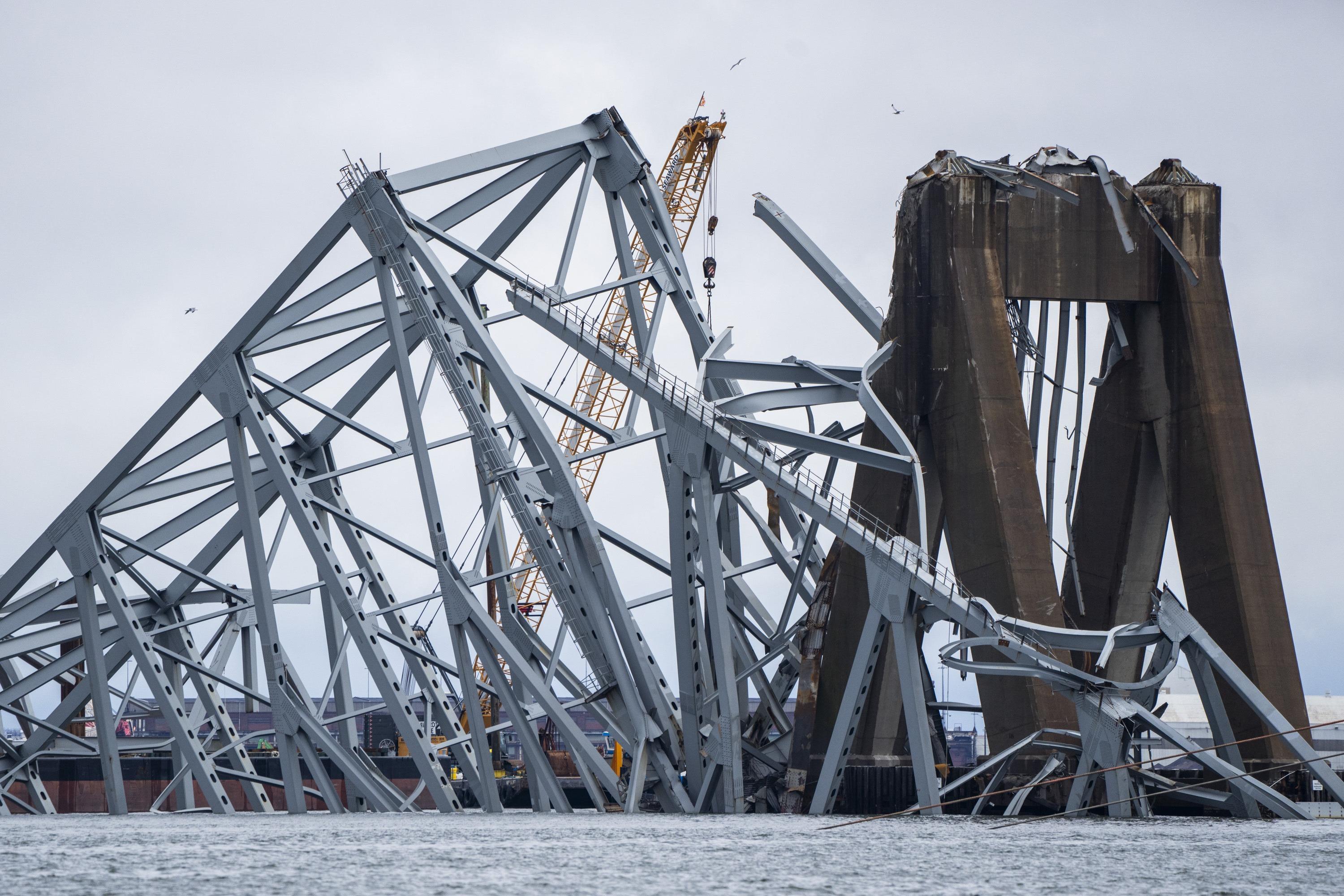 The Dali (right) a massive container ship from Singapore, still sits amid the wreckage and collapse of the Francis Scott Key Bridge in the Baltimore port, April 1, 2024. (PHOTO / AP)
The Dali (right) a massive container ship from Singapore, still sits amid the wreckage and collapse of the Francis Scott Key Bridge in the Baltimore port, April 1, 2024. (PHOTO / AP)
The Port of Baltimore opened a temporary channel on Monday, freeing some tugs and barges that had been trapped by last week's bridge collapse, but officials said wider restoration of commercial shipping remained frustrated by unyielding conditions.
Baltimore's shipping channel has been blocked since a fully loaded container ship lost power and collided with a support column of the Francis Scott Key Bridge last Tuesday, killing six road workers and causing the highway bridge to tumble into the Patapsco River.
A recovery team led by the US Coast Guard and the state of Maryland aims to quickly reopen the port, the largest in the US for "roll-on, roll-off" vehicle imports and exports of farm and construction equipment.
But first it must free the cargo vessel Dali, stuck under steel bridge debris with 4,000 containers and a 21-member crew stranded aboard since the accident.
Once debris is cleared, a third channel with a depth of 6.1 to 7.6 meters would allow almost all tug and barge traffic in and out of the port, said an official
To illustrate the task ahead, officials said recovery workers needed 10 hours to cut free and remove a 200-ton piece of debris - what they called "a relatively small lift."
"We're talking about something that is almost the size of the Statue of Liberty," Governor Wes Moore told a news conference. "The scale of this project, to be clear, is enormous. And even the smallest (tasks) are huge."
Beneath the surface, the job is even more complicated than originally imagined, said US Coast Guard Rear Admiral Shannon Gilreath, as the twisted steel is obscured by murky waters darkened by the volume of debris.
"These girders are essentially tangled together, intertwined, making it very difficult to figure out where you need to potentially cut so that we can make that into more manageable sizes to lift them from the water," Gilreath told the same news conference.
 A section of the damaged and collapsed Francis Scott Key Bridge is seen, in the Baltimore port, April 1, 2024. (THE BALTIMORE BANNER VIA AP)
A section of the damaged and collapsed Francis Scott Key Bridge is seen, in the Baltimore port, April 1, 2024. (THE BALTIMORE BANNER VIA AP)
Officials declined to estimate how long it would take to clear the harbor.
Limited ship traffic resumed for the first time on Monday after recovery teams opened a temporary channel with a controlling depth of 3.35 meterson the northbound side of the wreckage.
The first vessel to transit the channel was a tugboat pushing a barge supplying jet fuel to the US Department of Defense, the Coast Guard said on Facebook, posting video of the barge sliding beneath a truncated section of bridge that is still standing.
A second temporary channel on the southbound side with a depth of 4.6 to 4.9 meters would open "in the coming days," Moore said.
Once debris is cleared, a third channel with a depth of 6.1 to 7.6 meters would allow almost all tug and barge traffic in and out of the port, Gilreath said.
US President Joe Biden will get a first-hand look at the recovery on Friday when he travels to Baltimore, White House spokesperson Karine Jean-Pierre said.
The Biden administration has helped secure barges and a crane along with an early influx of money and was working with Congress to ensure the federal government pays to rebuild the bridge.


